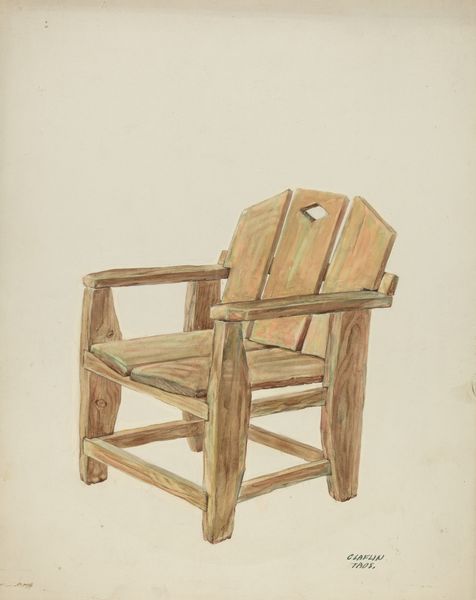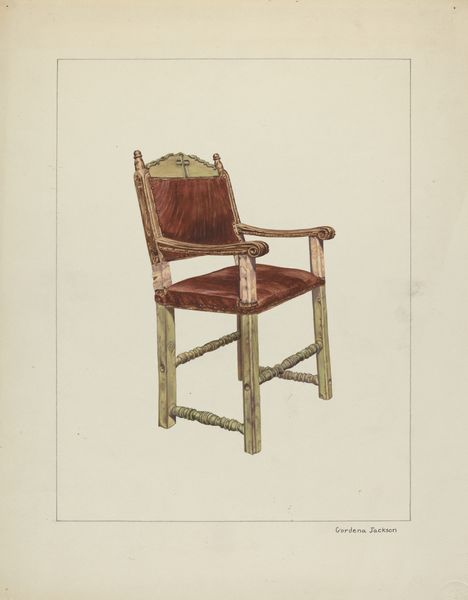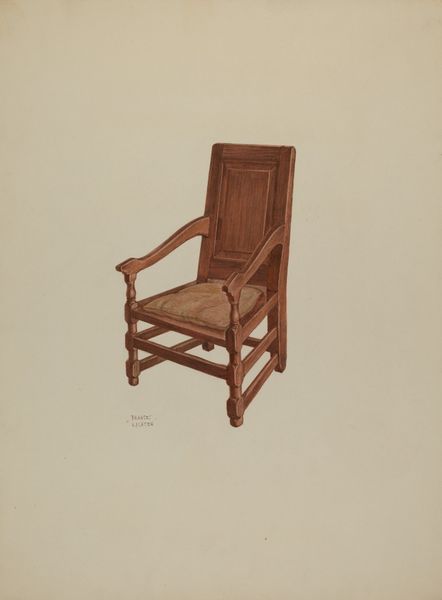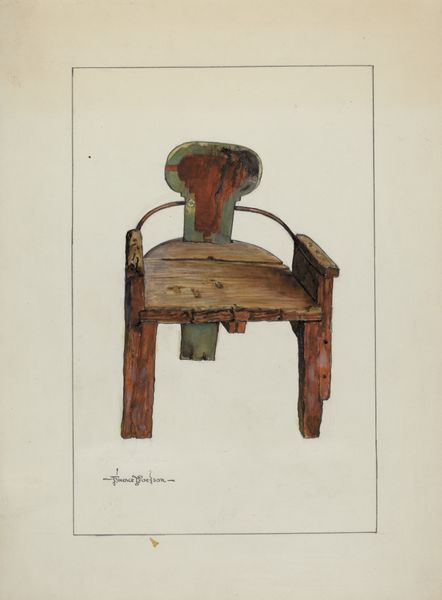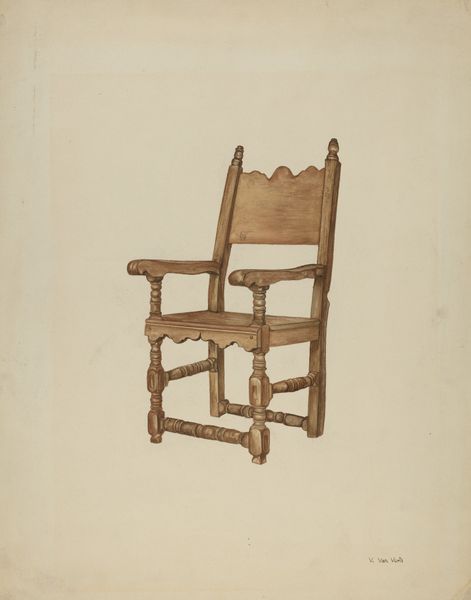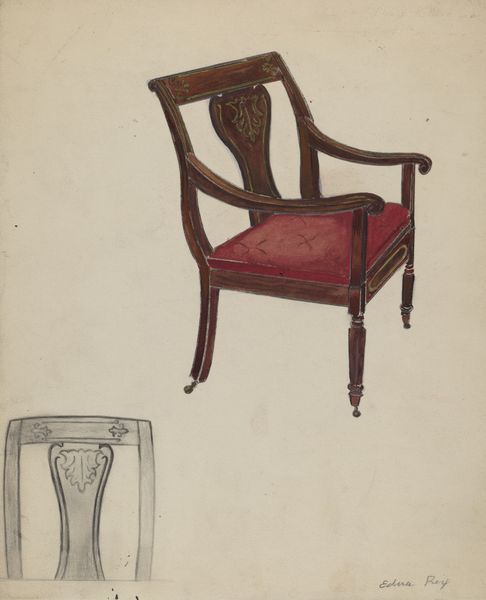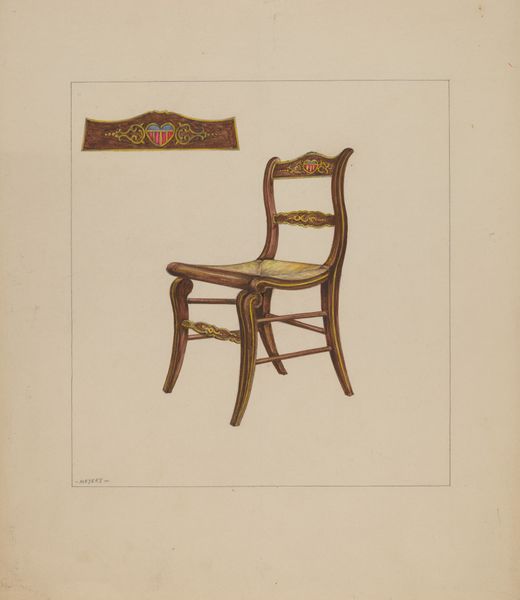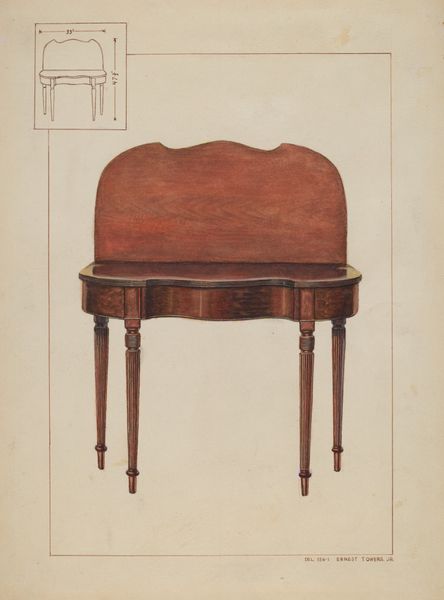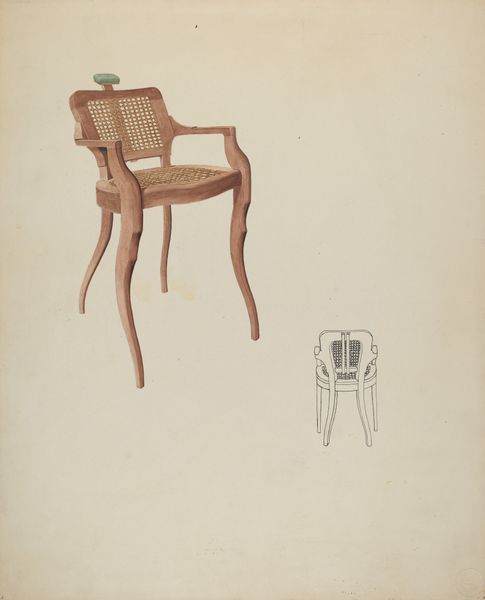
drawing, paper, pencil
#
drawing
#
paper
#
form
#
pencil
Dimensions: overall: 29.1 x 22.7 cm (11 7/16 x 8 15/16 in.) Original IAD Object: 121 cm long; 74 cm high; 74.5 cm deep
Copyright: National Gallery of Art: CC0 1.0
Editor: This is a drawing entitled "Table (Bench or Chair Combination)" created by Bertha Stefano between 1935 and 1942. It's rendered in pencil and perhaps colored pencil on paper, and depicts, well, a somewhat strange looking chair. It strikes me as an odd blend of practicality and, dare I say, ungainliness. What are your initial thoughts on its visual composition? Curator: Immediately, the interplay between form and function becomes apparent. Note how the artist uses line weight and shading to articulate the planes and volumes. The geometric structure seems deliberately simplified. Consider the formal relationship between the primary, larger chair form and the smaller table depicted in the upper right corner. What visual connections or disconnections do you observe? Editor: I see a kind of echoed cubism in the geometric simplification, but the execution is almost too…smooth? Does that make sense? I find it more illustrative than artistic. Curator: The "smoothness" you observe is critical. Examine the subtle gradations of tone, and observe how they define volume without disrupting the integrity of the overall form. Stefano appears less interested in pure representation, and more fascinated by how minimal details evoke dimension and depth. In what way is this visual economy powerful in this work? Editor: Well, limiting detail makes me consider the lines and the basic structure, and how they create the sense of a three-dimensional object on a two-dimensional plane. The very simplicity becomes the focus. Curator: Precisely! It asks us to engage directly with the core principles of design. Through this drawing, the artist has made an essay about form. Editor: So, focusing on the "how" instead of the "what" has helped me move past my initial judgment of its aesthetics. Curator: Indeed. Close observation of visual language often unlocks layers of meaning beyond surface appeal.
Comments
No comments
Be the first to comment and join the conversation on the ultimate creative platform.
